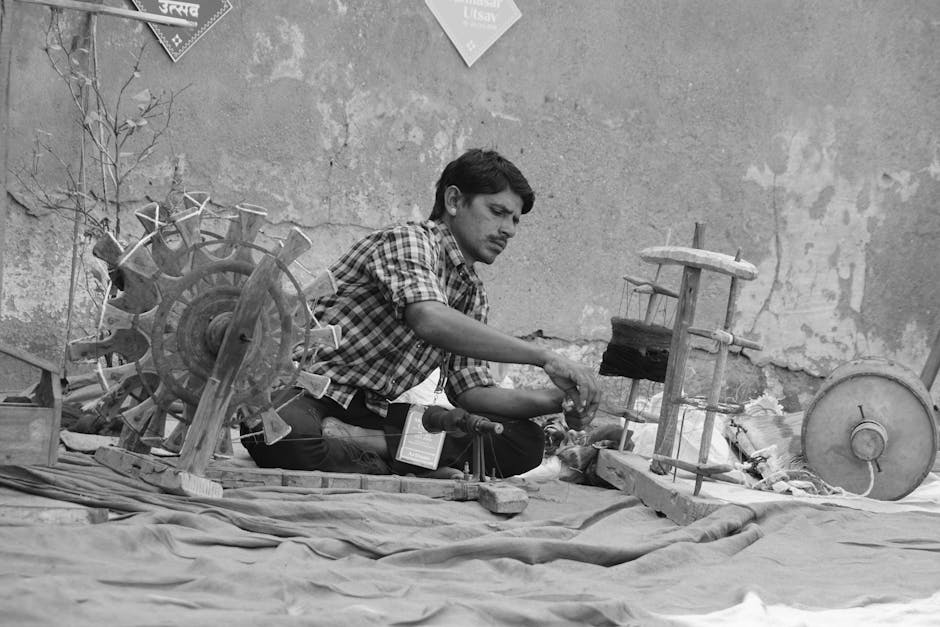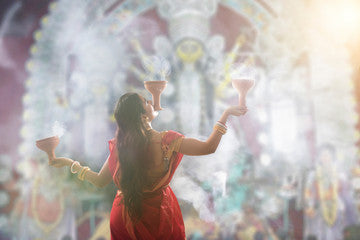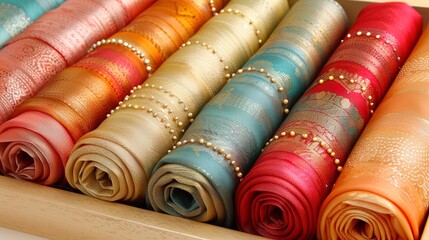The Renaissance of Indian Handloom: How It’s Weaving Its Way Back into Fashion
Introduction to the Indian Handloom Revival
Once merely a memory of India’s rich textile past, handloom is making a bold return. Now, it’s not just about fabric; it’s a statement of culture, sustainability, and craftsmanship. This revival isn’t happening in silence. It’s loud, proud, and very much in the spotlight of today’s fashion scene. From runway shows to sustainable fashion lines, handloom is taking center stage. This comeback is driven by a mix of tradition, innovation, and a growing desire for eco-friendly fashion choices. What’s exciting is seeing how ancient techniques are blending with modern designs to create pieces that are both timeless and trendy. Artisans across India are getting the recognition they deserve, breathing new life into age-old practices. This revival speaks volumes about India’s commitment to its heritage and how fashion can play a crucial role in preserving culture while advancing sustainable practices. Handloom is more than just fabric; it’s a narrative of India’s vibrant culture, history, and its future in the global fashion industry.
Historical significance of Indian handloom
The Indian handloom holds a story within each thread, a legacy that dates back thousands of years. This craft isn’t just about making fabric; it’s a rich tradition that showcases India’s diverse culture, heritage, and artistry. From the fine muslins of Bengal, known for their sheer quality and worn by royals, to the vibrant silks of Varanasi, each piece of handloom tells a tale of ancient skill and meticulous craftsmanship. These fabrics were more than just attire; they symbolized status, identity, and community. The British colonial era saw a decline in this art due to the introduction of cheap, mass-produced textiles. However, it’s making a comeback, revered not just in India but globally, as people begin to value sustainable and ethically made fashion again. The Indian handloom is not just fabric; it’s a piece of India’s soul, woven into the threads of history.
The decline of traditional Indian handloom
The journey of traditional Indian handloom has seen its fair share of ups and downs over the decades. Once at the heart of India’s cultural identity, handloom textiles have battled against the tide of industrialization and cheap mass-produced garments. The decline began in the late 20th century when rapid industrial growth introduced cheaper, synthetic alternatives to the market. This shift not only affected the demand but also the livelihood of countless skilled artisans. Shops began to fill with machine-made fabrics that mimicked traditional designs at a fraction of the cost and time. Fast-forward to today, the struggle continues as many artisans find it hard to compete with the convenience and price of factory-made products. However, the tale doesn’t end here. The essence of handloom— with its uniqueness, quality, and cultural significance—still holds a special place, sparking a movement towards reviving this glorious craft.
How Indian handloom is making a comeback
Indian handloom is getting back into the spotlight, and how! Once seen as outdated, it’s now celebrated for its quality, sustainability, and the unique story each piece tells. This comeback is big, thanks to a mix of social media, fashion influencers, and the push for eco-friendly fashion. People today love things that are not only beautiful but also kind to the planet. Handloom checks both boxes. What’s cool is how designers are mixing traditional methods with modern designs. This blend is hitting it off with folks who want to stay stylish while nodding to their roots. Plus, with the growing noise around “vocal for local,” more and more people are choosing handloom. This movement isn’t just about clothing. It’s also boosting local economies and keeping ancient crafts alive. To sum up, Indian handloom’s return isn’t just a trend. It’s a powerful statement of culture, sustainability, and innovation.
The role of designers and artisans in reviving Indian handloom
Designers and artisans are at the heart of bringing Indian handloom back to the spotlight. These creative folks mix traditional techniques with modern designs, making handloom relevant and exciting for today’s fashion. Designers collaborate closely with artisans, giving life to unique pieces that tell a story. This teamwork not only creates beautiful clothing but also supports local economies and sustains age-old crafts. By incorporating handloom fabrics into contemporary fashion, designers have opened a new chapter where tradition meets trendy, ensuring that handloom isn’t just seen as a relic of the past but as a living, breathing art form that’s both viable and valuable in the modern marketplace. Through fashion shows, social media, and celebrity endorsements, they’ve managed to place Indian handloom on the global map, proving that what’s woven with heritage and culture can indeed become a statement of modern luxury and ethical fashion.
Indian handloom in contemporary fashion
Indian handloom is making a big comeback in today’s fashion world. More and more designers are weaving traditional fabrics into their modern collections, showing that old skills can create new trends. Handloom fabrics like cotton, silk, and khadi are loved for their quality and durability. They’re eco-friendly too, which makes them a hit with people who care about the planet. What’s really cool is that each region in India has its own unique style of handloom fabric. This means there’s a huge variety to choose from, whether you’re looking for a sleek silk saree from Varanasi or a cozy cotton weave from Bengal. Big fashion shows in India and around the world are now featuring handloom pieces, proving that these traditional fabrics can be as chic as any modern material. It’s not just about looking good; it’s also about feeling good. Wearing handloom supports local artisans and keeps ancient skills alive. So next time you’re shopping for something new, consider going for an Indian handloom piece. It’s a way to look stylish while doing your bit for the environment and the community.
The impact of digital media and e-commerce on Indian handloom
Digital media and e-commerce platforms have played a pivotal role in bringing Indian handloom back into the spotlight. These modern tools have broken down geographical barriers, allowing artisans from remote parts of India to showcase their talent and products to a global audience. Instagram, Facebook, and Pinterest have become digital showcases for intricate designs and patterns that were once confined to specific regions. Additionally, e-commerce sites have made purchasing handloom products as easy as clicking a button, significantly boosting sales and income for weavers. This digital exposure has not only educated people about the rich history and effort involved in handloom but has also ignited an interest among the younger generation. Influencers wearing handloom sarees or dresses at high-profile events have further elevated its status, making it trendy yet again. In essence, digital media and e-commerce have given Indian handloom the platform it needed to thrive in today’s fast-paced world, making it more accessible and sought after than ever before.
Challenges facing the Indian handloom industry
The Indian handloom industry is facing quite a few hurdles, but let’s cut to the chase. First up, competition from cheaper, mass-produced fabrics is a big issue. Machines can pump out tons of fabric fast, making them way cheaper than the intricate, handmade stuff. Then, there’s the problem with modern trends. The younger crowd often leans towards what’s in vogue, and sadly, traditional handloom isn’t always seen as cool or trendy.
Another big challenge is the dwindling number of weavers. Many younger folks aren’t into taking up weaving; they’re looking for jobs in cities that promise a steady paycheck. This means fewer skilled hands to keep the craft alive. And let’s not forget about the copying issue. Unique handloom designs get ripped off and mass-produced without giving any credit or compensation to the original weavers.
On top of all this, there’s the headache of marketing and distribution. Getting handloom products in front of the right eyes, especially in a world that’s all about online shopping, is no small feat. And with everything going digital, not all weavers have the know-how or the resources to keep up.
So yeah, the Indian handloom industry is climbing a steep hill, but acknowledging these challenges is the first step to paving a way forward.
Indian handloom on the global stage
Indian handloom is making a big splash on the global stage. It’s not just about traditional wear anymore; it’s about making a statement. Designers worldwide are mixing handloom fabrics with contemporary designs, showcasing them in fashion capitals like Paris, Milan, and New York. This mix brings attention to the rich history and skill behind these textiles, making them more than just clothing—they’re pieces of art. Celebrities are often seen sporting handloom pieces, adding to their allure and demand. This global recognition has not only increased the value of Indian handloom but also inspired a sense of pride and a return to traditional roots among people. The spotlight on handloom helps preserve the art and provides sustainable income to weavers, whose skills have been passed down through generations. So, when you choose to wear a handloom piece, you’re wearing a story, a piece of India’s heritage that’s making its mark all around the world.
The future of Indian handloom in fashion
The future of Indian handloom in fashion looks bright. More and more designers are embracing its rich heritage and incorporating handloom fabrics into their collections. It’s not just about the look; it’s about the story and the craftsmanship behind each piece. This shift towards sustainable and ethically made fashion is giving Indian handloom a new lease on life. Big fashion brands and upcoming designers alike are beginning to understand the value of these traditional textiles, not just for their beauty but for their role in promoting sustainability. With consumers now leaning towards more conscious choices, the demand for handloom products is on the rise. This revival is not just a trend but a movement, one that is making waves both in India and across the globe. Indian handloom is slowly weaving its way back into the heart of fashion, proving that traditional techniques have a significant role to play in the future of fashion.






